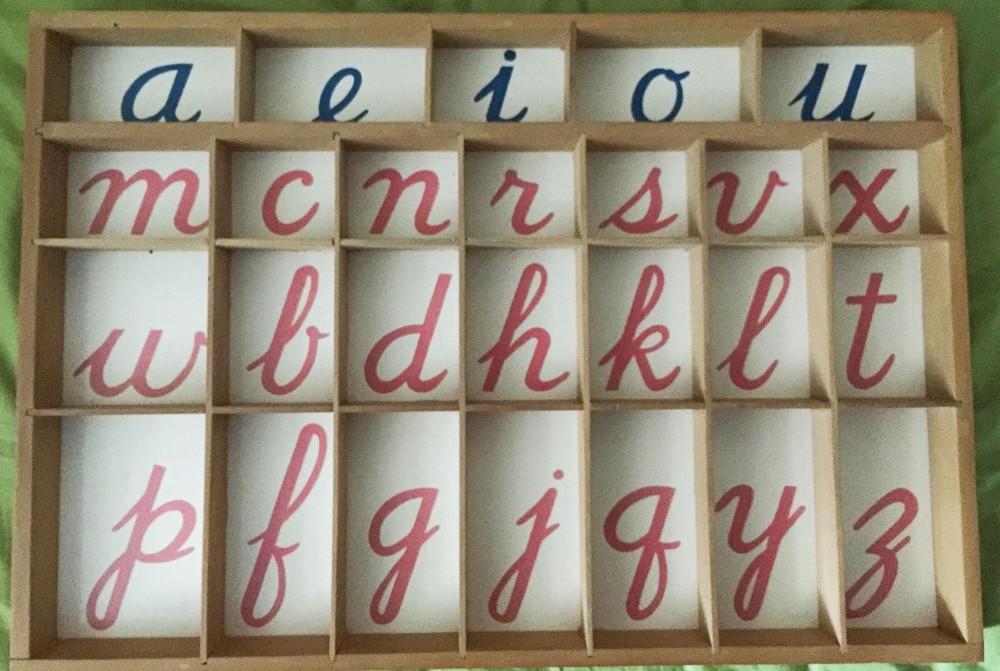
“I got an interesting question from a Montessori school recently. They had this material that consisted of a big box with a slot for each letter in the alphabet. Unfortunately many of the letters had gone missing over time, and they now no longer had the complete alphabet.”
It probably goes without saying that it’s pretty hard to make much with your ABCs if you have an incomplete set. Hansen suggested in response to the query that 3D printing would provide a quick and “relatively simple” solution to the problem of the missing letters. He found out later that, indeed, it was a simple enough solution although somewhat time consuming in the end.
Hansen began the project by taking a picture of the wooden alphabet box using his phone camera. The shape of each letter was already painted on the alphabet box, so Hansen decided to use the preexisting letter shapes to create his 3D models.
After creating the individual letters, Hansen used Photoshop to “slice out each letter” individually. He noted that while he used Photoshop for this part of the process, “Gimp or other image editing software should work just as well.” Working in Photoshop, he created a separate file for each letter of the alphabet, removing the background and rendering the foreground in black to simplify things.
With the letters “completely rasterized”–that is, converted to pixels on a grid–Hansen moved on to create vector versions of the letters so that they could be converted to 3D objects or models. The problem was that he didn’t know much about drawing vector shapes and, furthermore, wanted to be able to “automate the whole process” from that point forward.
“Luckily,” he explained, “I found an amazing open source project called “potrace” that did just that. A quick “brew install potrace” later, I was able to move on.”
In the interest of making the most of his material, Hansen used Cura to manually lay out the models so he could fit as many as possible into a single print job. He used his Lulzbot Mini 3D printer and OctoPrint to manage the approximately 35 print jobs, each of which took around 20 to 60 minutes. If it sounds time-consuming, it was, but Hansen managed it well.
“So, all I had to do was remove the printed parts from the build plate and then kick off the next one, but obviously 3D printing is not ideal for ‘mass manufacturing,’” he said.
That said, as his project demonstrates, large-batch (relatively speaking) projects like this one are completely manageable and are probably desirable if the project isn’t ongoing.
The final result is pretty impressive. Hansen concluded:
“It sure wasn’t the fastest or most practical way to solve the problem, but it was super fun working on automating the process and seeing the final product. The school was certainly also excited about getting their letters back.”
What do you think of these innovative letters? Discuss in the 3D Printed Alphabet forum over at 3DPB.com.
